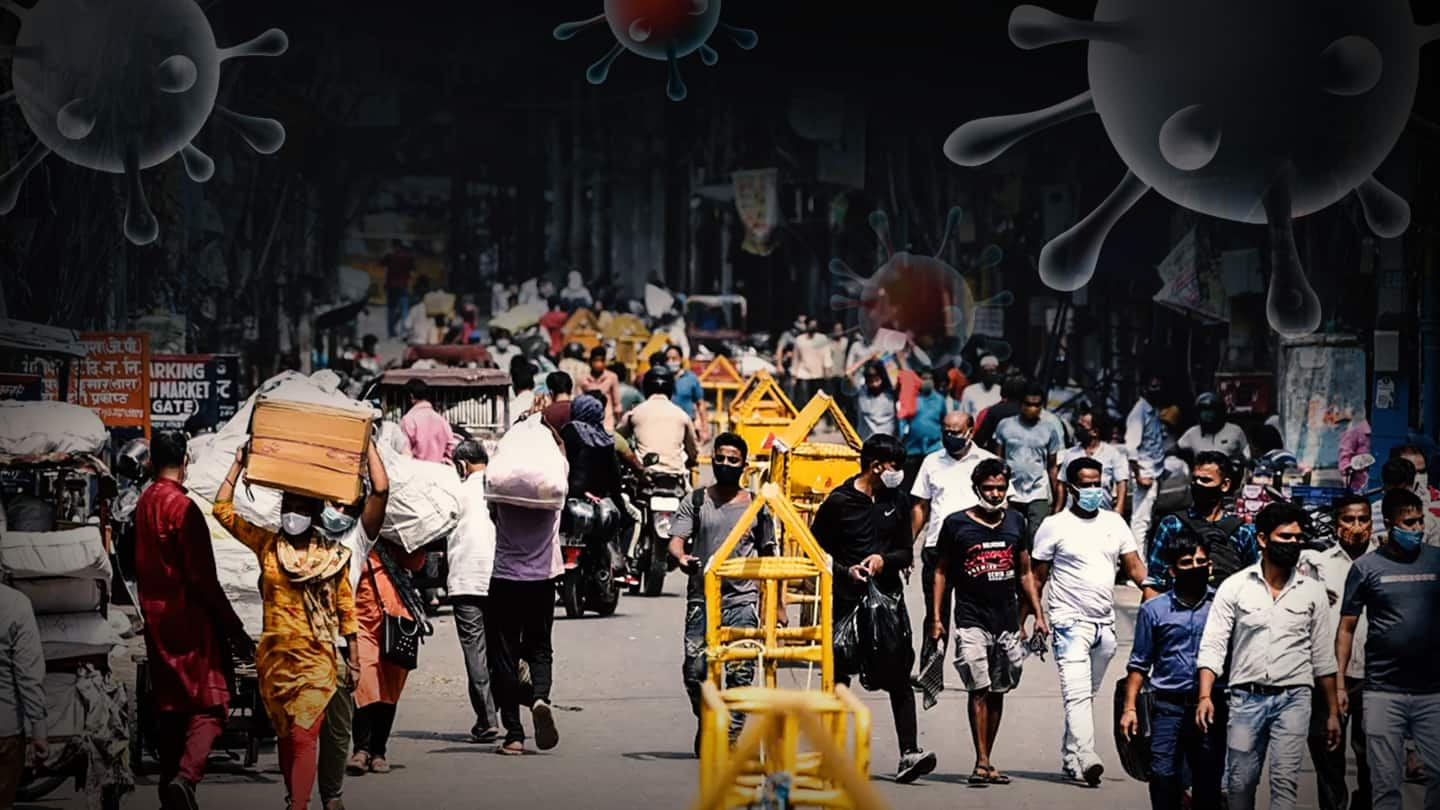
Coronavirus: Centre flags increase in 'R' factor in several states
What's the story
The Indian government today raised concerns over an increase in the 'R' factor linked to the coronavirus' spread in several states and union territories.
The issue was flagged by the Union Home Ministry in an advisory to state governments across the country.
But what exactly is 'R' factor? Find out that and more updates on the COVID-19 pandemic here.
Details
What is the 'R' factor?
'R' factor is the rate or speed at which a disease spreads in a community.
In simpler terms, it is a measure of how many people an infected person is further infecting at a certain point in time.
For instance, an 'R' factor of 1.0 implies an infected person will, on an average, transmit the virus to one more person.
Data
What does the data suggest?
On Wednesday morning, India reported an 'R' factor of 0.95 - a significant rise from last week's 0.89, and 0.74 one month ago.
At the peak of the second wave in early May, India had witnessed this value at a worrying 1.32.
India had notably reported over 4,14,000 infections at the peak of its deadly second wave of the pandemic.
Experts
'Even a minor change can make a big difference'
Experts say a community should aim to maintain the 'R' factor below 1.0 to make sure the virus cannot infect sufficient number of people to sustain the outbreak in the long run.
"Even a 0.1 change can make a big difference going forward, in terms of how many active cases there will be," Dr. Sitabhra Sinha, a researcher at Institute of Mathematical Science, said.
Advisory
Home Ministry flags violations, warns against laxity
The Home Ministry flagged "blatant violations" of coronavirus norms in its letter to states, warning of re-imposition of restrictions if protocols are not followed.
"It is emphasized that the second wave of COVID-19 is not yet over. We ought to remember that while the reach of vaccination is increasing considerably, there is no room for complacency," the Ministry's letter read.
PM's warning
Yesterday, PM Modi urged citizens to follow protocols
The letter came one day after Prime Minister Narendra Modi said laxity in following coronavirus rules could be a potential invitation to a third wave of the pandemic.
"It is not okay to have huge crowds in hill stations and markets without masks. The virus does not come and go on its own...We bring it with us when we disobey the rules," he said.
Situation
India's coronavirus situation
India had faced the world's worst coronavirus outbreak earlier this year, reporting lakhs of cases and thousands of deaths daily amid a crumpled healthcare system.
The situation has since improved, with the country reporting under 40,000 cases in the past few days.
However, experts have warned that a third wave of infections could hit India as early as next month.
Vaccination
How is India's vaccination drive going?
India has had an uneven national vaccination drive, troubled by vaccine shortages and hesitancy among public.
More than 38 crore vaccine doses have been administered across the country so far.
Even though over 22% of Indians have received at least one vaccine shot, just about 5.5% have been fully inoculated as yet.
The government plans to vaccinate all adults by the end of December.